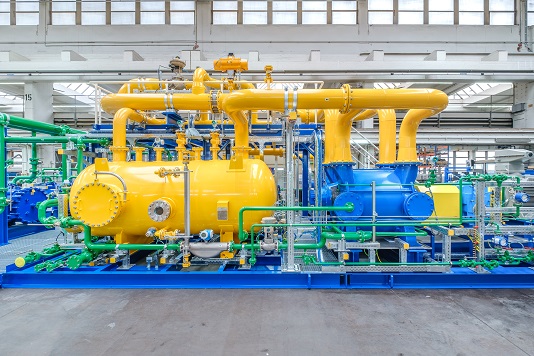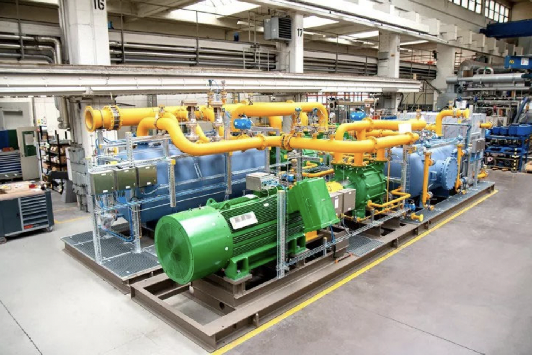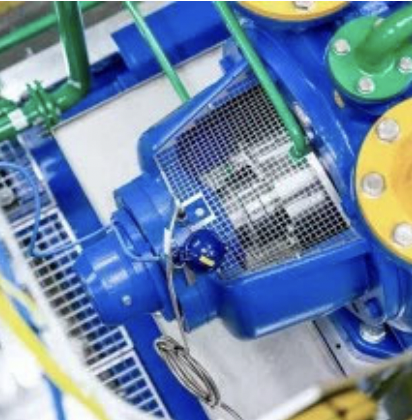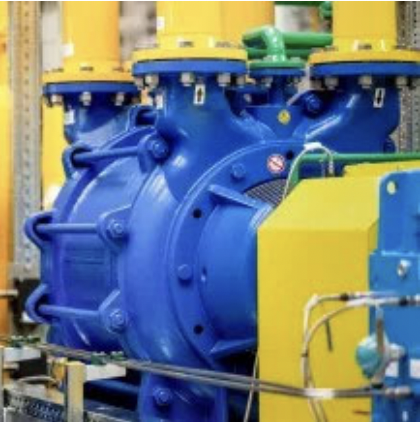Choose a different country or region to see the content specific to your location
Select Your Country/Region
Current Region:
 Global (EN)
Global (EN)
How can we help you?
Hydrogen is an important element that is required in many industrial processes. As a pioneer of the energy transition, hydrogen also plays a key role, thereby significantly increasing the demand and thus the production capacities. For further processing, the hydrogen gas usually needs to be compressed. The low density and ignition energy present challenges for the compression of hydrogen, in addition to some production‐specific requirements.
Liquid ring compressors are particularly suitable for meeting the specific requirements of hydrogen compression in a simple and safe manner, as the following consideration shows.

In general, liquid ring compressors can be operated with a variety of different media. In hydrogen compression, water is typically used as the working and sealing medium. This makes Nash liquid ring compressors insensitive to moisture‐ saturated gases, such as those that come from electrolysis. Even a certain amount of liquid in the gas, which can occur in the event of malfunctions, can be conveyed without any interruptions.
The compression process is almost isothermal, and a part of the water vapor condenses within the compression chamber when dealing with moist hydrogen. Drying systems can be installed downstream of the compressor and, due to the upstream compression and condensation, they can be designed to be significantly smaller.
With Nash liquid ring compressors, hydrogen can be compressed up to 8 bar absolute. If higher pressures are needed, other compressor systems can be installed downstream. The interstage pressure can be optimized in such a way that the most economical solution for the overall system, including intermediate drying, is achieved for the respective case of demand.
The permanent contact of the gas with the operating liquid, combined with the nearly isothermal compression, enables the safe operation of potentially explosive gases such as hydrogen. ATEX certifications are available for all categories, gas groups, and temperature classes.

Within a liquid ring compressors, the gas flow is continuously supplied to the vane cells and compressed, so that no pulsations occur in the gas flow. The pressure can thus be regulated very precisely without the need for additional buffer tanks. This is a crucial advantage especially for electrolyser’s.
Since there are also no oscillating masses, a liquid ring compressor generates only very low vibrations, which has a positive effect on the drivetrain and for the installation site, as well as comparatively lower noise emissions.
If hydrogen production is using renewable energies such as wind and photovoltaic ("green hydrogen"), fluctuations, caused by volatile availability of the primary energy, May require regular shutdowns of the production. Nash compressors can respond to this with various types of control and are also well‐suited for frequent switching cycles.
The shaft seals are realized using liquid‐lubricated mechanical seals. By using double seals in combination with supply systems (e.g., API Plan 53 or 54), leakages are reliably prevented, and the requirements of TA Luft are met.
Nash 2BQ liquid ring compressor

With the production of hydrogen by water electrolysis, oxygen is also produced as a byproduct, which in some cases is further utilized. Due to its high reactivity, oxygen is considered even more hazardous than hydrogen. By design, NASH liquid ring compressors offer the safest method to reliably compress this gas up to 14 bar absolute.
The use of only one no‐metal‐to‐metal contact rotating component, the use of water as the working and sealant fluid, the type of bearing, and the low vibrations, all contribute to reducing wear and maintenance to a minimum. Costly maintenance work is almost not required. At the same time, this leads to high operational reliability and very long service intervals.
Since the 1970s, Nash liquid ring compressors have been used for the compression of hydrogen and oxygen. Some of the Nash hydrogen compressors, built decades ago, are still in operation today, emblematic of their durable and robust construction.
In addition to the compressor itself, it is also important that all associated system components are tailored for a continuously safe operation and are configured to meet the specific requirements and conditions. Nash as a system supplier, benefits from decades of experience in the compression of hydrogen and oxygen.
To optimize the overall plant design, it also helps that Nash can offer the largest portfolio of liquid ring compressors: thus being able to offer a suitable compressor for almost any requirement. These can be designed as single or multistage and configured as one unit or several in parallel. Maximum volumetric flows of over 30,000 m³/h per machine and compression pressures of up to 14 bar abs. can be achieved with the well‐known Nash series 2BK, 2BG, 2BQ, Vectra XL, 2BE, HP, 905, P2620.
